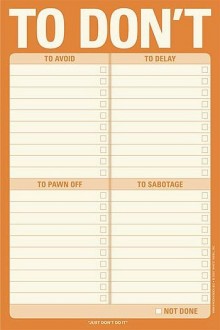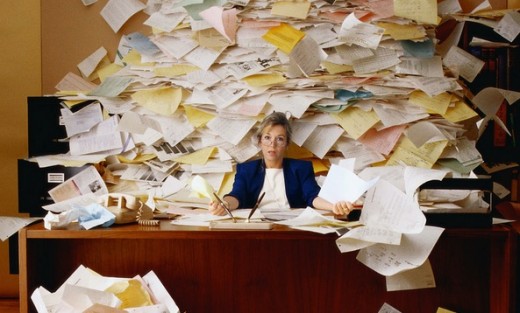
It’s the distracted generation, the ADD generation, and the target of countless articles by The New York Times bemoaning its loss of attention and focus; yes, it’s the millennial generation.
But these detractors miss the constructive nature of twenty-somethings: our strive to build new things, to run with ideas, and to create action that fosters tangible results. While this creation is valuable, the The New York Times does get one thing right: we need to focus more. We need to reclaim time from our mediocre ideas that consume mental cycles. We need to stop working on our reinterpretation of Catcher in the Rye (the twist is that it’s based in Missouri!) and spend more time on our startup, or nonprofit, or whatever the central focus of our life is. What we need is to stop padding our to-do lists and add a new list to our repertoire: our to-don’t list.
 A to-don’t list is comprised of the things you will not do: Those ideas that are percolating in your head that you secretly know are not a good use of your time, yet you’re reluctant to stop thinking about. There are three simple rules for handling items on your to-don’t list:
A to-don’t list is comprised of the things you will not do: Those ideas that are percolating in your head that you secretly know are not a good use of your time, yet you’re reluctant to stop thinking about. There are three simple rules for handling items on your to-don’t list:
- You will not work on these ideas!
- You will not think about these ideas!
- You will not talk about these ideas!
How about that idea for the food truck you’ve always had, but have no time to start? By adding it to your to-don’t list, you free up mental cycles for other purposes. It’s an example of “real talk” with yourself.
By not talking about the idea, you free that part of your identity that you wrapped up with this potential project. By not thinking about it, your bring clarity to yourself so you can focus on the projects that matter. And by not actively working on your to-don’t list items, you free your time to be more productive.
How to Make a To Don’t List
Making a to-don’t list is simple. First, create a list of every project you’re working on or thinking of working on (Yes, your Catcher in the Rye adaptation is included). For example, your day job is considered a project. Sitting on the board of a local nonprofit is a project. The list goes on. I like to create my list in a spreadsheet. I then add three additional columns.
- Does it make me happy?
- Is is essential and/or helpful to my career?
- Is it efficient?
Go through each project and put an X in the corresponding cell if the statement applies.

Now comes the hard part. If a project does not have at least two Xs, add it to the to-don’t list.
This means don’t do it! Don’t work on it! Don’t think about it! Don’t talk about it! It will be painful. Yes, it might hurt to add your screenplay to the list. But you have to follow the system. It doesn’t matter how much it hurts. You need to follow through if you want to have an effective to-don’t list. The list serves as a mental block from you thinking, acting, or working on these items.
Liberation from Mental Excess

A to-don’t list is a quick way to bring order to your life. Stop wasting time with a million projects all at once. Give yourself a chance to examine how you spend your time and store stuff away. The more things you actively block yourself from working on, the more time you will have to focus.
There is something odd about focus. It often feels unnecessary (why not multi-task!?), but in the long term it gives you the perspective and context to see the nuance of what you’re working on, allowing you to do a better job while stressing-out less.
The to-don’t list gives you the power to focus. It’s spring cleaning for the mind. It allows you to focus on what’s useful; what you care about at your core. We spend so much time adding and organizing things to our to-do lists, but we are already doing enough. It’s time to do less, not more.
Alexander Trinitatov via shutterstock
Get the TNW newsletter
Get the most important tech news in your inbox each week.




